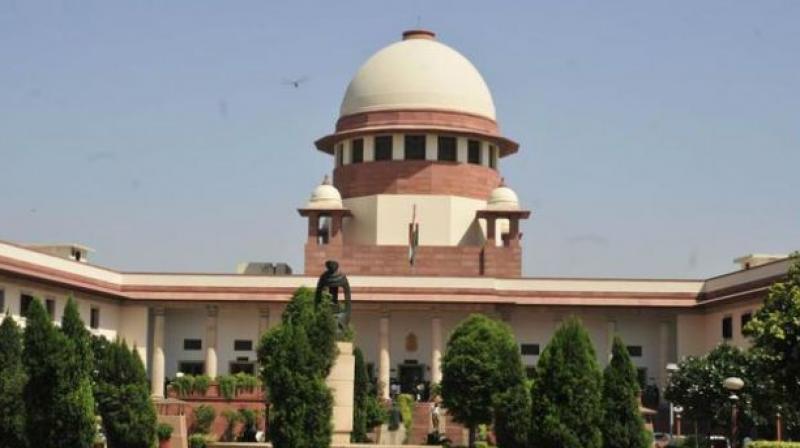Lawmaking in India
Legislative Powers
The legislative power of the state and the Center are defined in the Constitution and this power is divided into three lists. Subjects that are not mentioned in any of the three lists, known as the residuary subjects. Subject to the provision in the Constitution somewhere else, the power to make law on subjects laggard, rest with parliament or state legislative assembly as the case may be per Article 245.
Considered a constitutional amendment that could pass under the legislative authority of Parliament, is no more valid after the addition of Article 368 (1) by amendment 24.
Union List
Union list consists of 100 items (previously 97 items) Parliament has exclusive power to legislate.
State list to make law in force
The list of countries consists of 61 items (previous 66 items) where the state legislative assembly to make law in force in the country. But in certain circumstances, the Parliament can also set up while on the subjects mentioned in the list of countries, when Rajya Sabha has passed a resolution by a majority of 2/3 that it is prudent to set national interest per Articles 249-252 of the Constitution.
concurrent list to make law in force
Concurrent list is composed of 52 (previously 47) where both the parliament and state legislative assemblies to make laws on their domain subject to Article 254 of the Constitution
The separation of powers between the legislative, executive and judiciary In India
the central and the state legislature is responsible for legislation, the central government and the state are responsible for law enforcement and judicial (Supreme Court, High Court, and lower courts) to interpret the law. However, there is some overlap in the function and strength of the three institutions. For example, the president has certain legislative and judicial functions and the legislature may delegate some of its functions to the executive in the form of subordinate legislation.
The difference between Bill and Act
legislative proposals were brought before one of the houses of the Indian Parliament in the form of a bill. A draft bill is a legislative proposal, which, when passed by both houses of parliament and agreed by the President, it becomes an Act of Parliament.

Once the bill has been framed, it should be published in newspapers and the general public was asked to comment democratically. then the bill can be amended to include a public opinion in a constructive manner and then be introduced in Parliament by ministers or private members. Former government bill and a bill called the MPs the latter, a private member.
Public bills and private bills in Law Making
Bills can also be classified as public bills and private bills. A public bill is one reference to the issues that apply to the general population, while a private bill relates to a particular person or corporation or institution. The Orphanage and Bill House Charities or Muslim Waqfs Bills is an example of a private bill.
A bill introduced in the Lok Sabha pending for approval, the deviation when the Lok Sabha was dissolved.
How Bill is converted into law in Parliament
A Bill is a draft legislative proposal. It must pass through various stages before it becomes an Act of Parliament. There are three stages through which a bill must pass in the House of Parliament. This procedure is the same for the State Legislative Assembly.
Ordinance
When both houses of the parliament are not in session, and the legal provisions are felt inadequate, the president is satisfied with the need for urgent action, he/she may promulgate ordinances that are required under Article 123 of the Indian constitution. An ordinance passed by the president has the same force and effect as an act of parliament.
Every ordinance shall cease to exists if it is not passed by parliament before the expiry of six weeks from the reassembly of the parliament. The president will not need to enact legislation amending the constitution or violate the constitution.
When the state assembly is not in session, a governor can also issue ordinances under Article 213 and is subject to the approval of the president in the case needed to be.
Judiciary the lawmaking authority by Judicial activism
Judicial activism occurs when the court has the power to review the actions of the State. Articles 32 and 226 of the Indian Constitution give the power of judicial review to a higher court to declare, legislative, executive, or administrative void if contrary to the Constitution. The power of judicial review is a basic structure of India
Constitution
Article 32 of the Constitution of India gives the right to every individual to move directly to the Supreme Court of India for his or her basic rights enforcement.
Kamgar Fertilizer Company VS Union Of India
Article 32 confers power on the Supreme Court to issue an order or warrant for the enforcement of fundamental rights. As a matter of fact, The Supreme Court on Kamgar Fertilizer Company VS Union Of India states that the power of the Supreme Court under Article 32 is an integral part of the basic structure of the Constitution of India
“because it means to provide basic rights by providing an effective remedy for their enforcement, if and when they were violated. ” It can not be postponed even during emergencies.

A warrant/order corresponding to Article 32 for the enforcement of Articles 17, 23, and 24 can be passed to private individuals too. Increasingly, the Supreme Court has interpreted Article 32 in a very liberal in many cases to uphold the basic rights even against private entities do public function.
Article 226 of the Constitution of India provides power to the High Court to issue an appropriate order or warrant for the enforcement of basic rights and other legal rights.
In this context, the High Court’s jurisdiction under Article 226 appears to be wider than the jurisdiction of the Supreme Court under Article 32. Both Article 32 and 226 is the basic structure of the Indian Constitution. Meanwhile, Article 227 provides power control over the supervision of the High Court on subordinate courts, specialized courts, and the courts.
Supreme Court exercises special powers
Furthermore, the Supreme Court has the power to grant special leave to appeal from any judgment, decision, determination, sentence or order of any cause or matter through the court or tribunal under Article 136 of the Constitution of India gives special powers on. The Supreme Court exercises special powers in cases where the gross injustice occurred or a substantial question of law is involved.
Strength in Article 136 is one of discretion and can be executed to decide the case of justice, equity, and good conscience.

However, it should be used with proper care and caution. In Pritam Singh v. State Supreme Court said that the great powers of discretion under Article 136 should be done sparingly and in exceptional cases only.
Tirupati Balaji Developers Pvt. Ltd. v. Bihar state, Supreme Court
In Tirupati Balaji Developers Pvt. Ltd. v. Bihar state, Supreme Court said that Article 136 does not provide a right of appeal to the party but discretion in the Supreme Court intended to be executed on considerations of fairness, call of duty, and the eradication of injustice.
128 Rating
FAQ Law Making – Indian Constitution
Legislative Procedures in India for the Union Government’s proposed bill require passing two legislative houses of the Indian Parliament, the Lok Sabha, and Rajya Sabha.
The basic function of Parliament is nothing but making Laws. All legislative proposals should be brought in the form of Bills before Parliament. A Bill is a provision in the draft and can not become law unless it has been approved by both Houses of Parliament and the approval of the President of India
there were about 1,248 laws as of January 2017
470 Articles
The names of the Constitution of our country as India, Bharat. The first article of the Constitution of India states that “India, that is Bharat, shall be a union of states,” implicit codification of India and Bharat as an official short name for the Republic of India.
A Bill is a draft legislative proposal. It must pass through various stages before it becomes an Act of Parliament. Moreover, There are three stages through which a bill must pass in the House of Parliament. In fact, This process is the same for the State Legislative Assembly.
Contact Top Lawyers / Advocates for Constitution Litigation
Call: +91-9444014096 to contact Top Lawyers / Advocates for Legal services with regards to Constitution Litigation.
